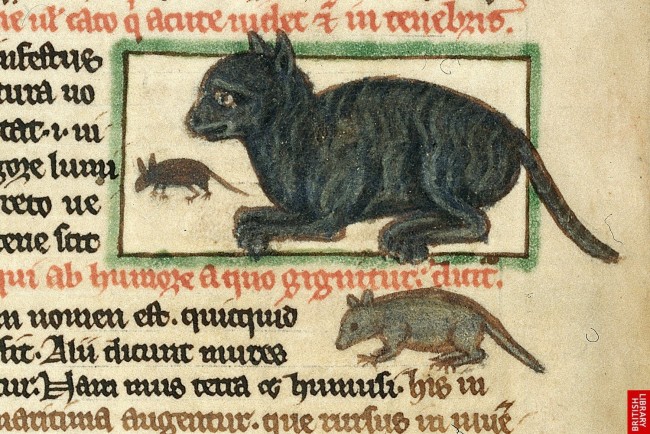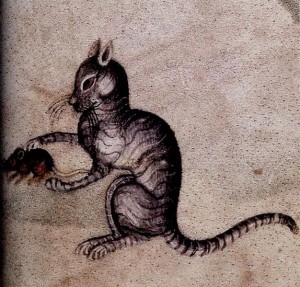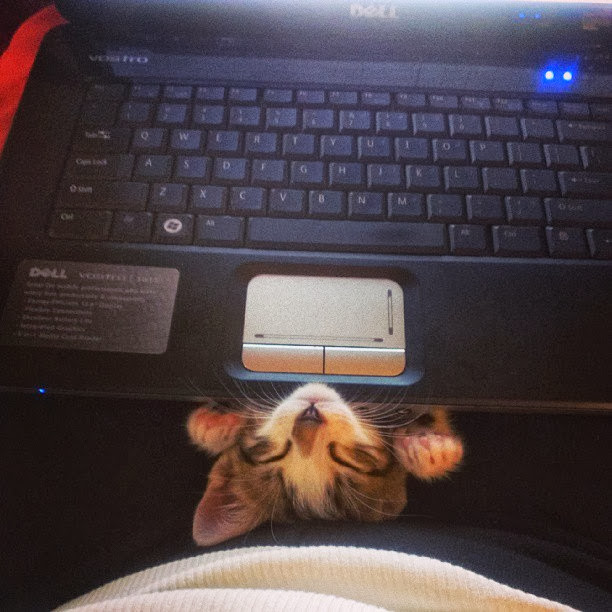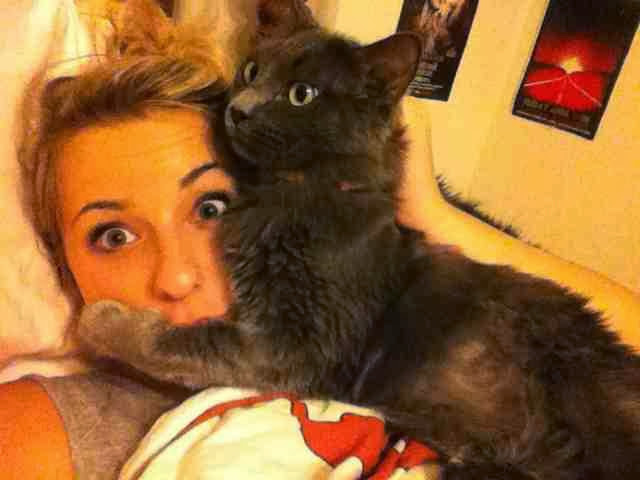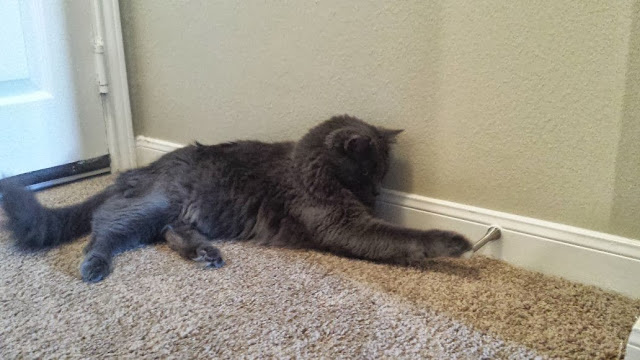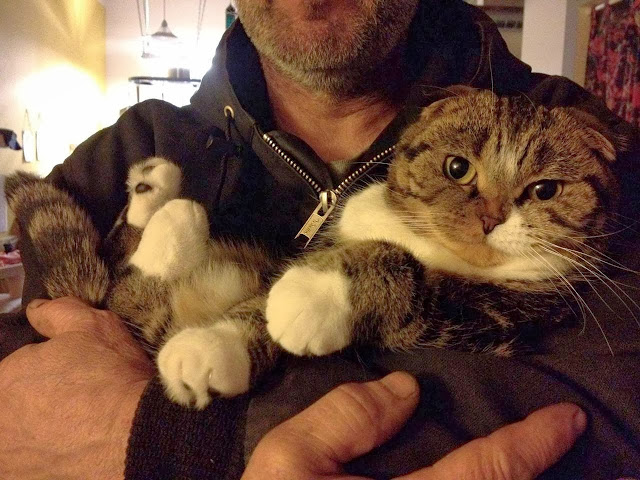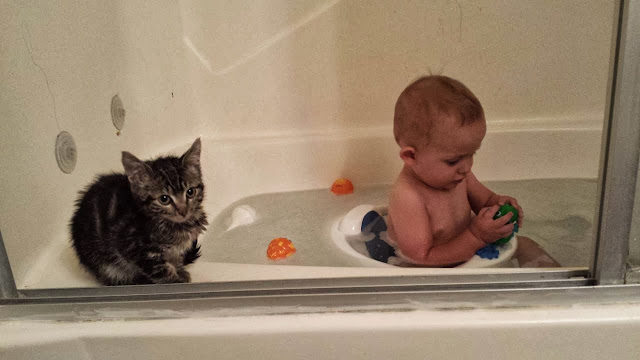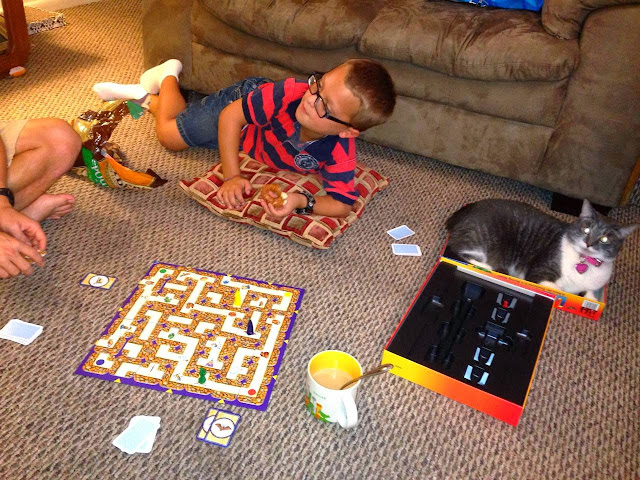Earlier this summer, Lucy Noland, a co-anchor at NBC4 News in Los Angeles, shared some impressive achievements in regard to battling a crisis faced by many metropolitan areas in the US—an out of control stray
cat population.
Notice I said "stray" and not "
feral cat" population, as the problem demographic seems to be comprised of stray animals here in Los Angeles, according to the cat rescue and advocacy organization,
Stray Cat Alliance.
This distinction, as made by national cat advocacy organization Alley Cat Allies, is important because stray cats, like "resident" cats in the home, are socialized to people and can be acclimated or reconditioned to life inside where they can once again thrive as companion animals.
By helping to reduce the overpopulation of stray cats through owner and would-be owner education and more directly by neutering (removing reproductive organs of either gender) adult and sub-adult cats, Stray Cat Alliance is profoundly mitigating potential concerns associated with an overwhelmingly large free-roaming population of stray cats.
The organization not only prevents recruitment of strays into feral populations, which are more challenging to deal with, and the birth of unwanted litters through humane intervention, but it provides permanent and foster homes for strays.
To top it off, Stray Cat Alliance works anywhere there is a need. This includes low income neighborhoods, which may require the most attention. In such areas, clientele and other residents may be entirely unaware or, at least, incapable of employing responsible measures to care for an already overwhelming number of domestic felids out "on the prowl."
Christi Metrople, the Executive Director of the Stray Cat Alliance said, "in two years her organization has neutered over 5000 cats in its effort to help Los Angeles become a "no kill" city.
But she and her staff and hundreds of volunteers have more ambitious plans. They hope to not only build a "no kill" city, but become a model for other metropolitan areas in hope of building a "no kill" nation; and they are doing it one stray at a time for a huge stray cat population, which is commensurate with a city as large a size as Los Angeles. It's a big problem.
The most responsible thing a cat owner can do is keep his or her cat indoors, and certainly make sure they are spayed or neutered and vaccinated.
Animal advocacy groups like the Stray Cat Alliance are ardent supporters of Trap, Neuter and Return (TNR). This method of population control is considered quite humane and supports the "no kill" agenda of Stray Cat Alliance and complements the organization's rescue efforts.
Some wildlife conservationists argue that TNR programs have limitations as a measure for controlling stray and feral cat populations. Their concern is that the practice may not adequately address issues more peripherally related to population control, like the impact free-roaming domestic cats have on veterinary public health and human health in terms of communicable disease transmission, or the impact cats may have on wildlife populations.
Christi Metrople, Executive Director of Stray Cat Alliance
Disciples
of activist and lawyer Nathan Winograd, like Ms. Metrople, are indeed, ardent supporters of Trap, Neuter, and Release (TNR) programs. Ms. Metrople is acknowledged for having said the following:
"For every dollar you spend on spay or neutering cats, you save $10 that you would spend on warehousing, killing and disposing of that animal."
A recent study suggests that vasectomized or hysterectomized (TVHR) cat populations are even less sustainable or easier to extinguish than TNR populations. In fact, in a
blog post summarizing the study, Nat Geo News staff writer Christine Dell'Amore reported the following:
"The results showed that if 35 percent of a cat population underwent TVHR, that population would be reduced by half and would disappear in 11 years. Alternatively, if the cat population underwent TNR, 82 percent of cats would need to be captured and neutered in order to eliminate the colony in 11 years."
This is promising news. However, in that same post, Christine reported that "Sheilah Robertson of the American Veterinary Medical Association's Animal Welfare Division also noted that "it's unlikely a single tactic will be a cure-all" for the feral-cat problem."
I myself, a wildlife conservationist, am writing a book about the unfortunate plight of
black cats—animals that often end up the last to leave shelters, if they leave at all. I've always been enamored with the "big cats," but more recently I acquired an affinity for "house" cats, especially black cats—the true underdog. Many are euthanized because no one ever rescues them.
Black Cat Rescue in Boston, like Stray Cat Alliance in Los Angeles, is praised by cat enthusiasts. Like the Stray Cat Alliance, they are finding homes for otherwise unwanted animals and making critical contributions to cats in need of homes and capable of being helped.
Black cats, in particular, have suffered greatly for centuries at the hands of humans. They have been abused and outright tortured. Their story has been likened to the Holocaust. And it has moved me beyond words.
I may have been born a "dog" person and as a zoologist I studied bears—and I guess I've to become a "bear" person. With that said, learning of the persecution of black cats over a period of centuries has facilitated my conversion to a "crazy cat guy."
And after learning how many black cats have been euthanized because of a larger issue of overpopulation, I can't go back.
An outrageous number of pets have been overlooked and neglected with respect to responsible cat ownership. Black cats continue to be abused due to the persistence of pure mythology, but all cats suffer when their human caretakers act irresponsibly.

This month, Stray Cat Alliance will celebrate their annual event and the 13th Anniversary of the Stray Cat Club on the evening of October 19th.
Special guests will include internationally renowned cat behaviorists Mieshelle Nagelschneider and Jackson Galaxy of Animal Planet's
My Cat From Hell.
In my back cover review for Mieshelle's scholarly-cited book
The Cat Whisperer, which she co-wrote with Cameron Powell, I shared the following:
"The reason people are so mesmerized by house cats is because they are truly miniature versions of lions, tigers, and leopards.
 Mieshelle explains in an unprecedented and a most accessible way, the behavior of the house cat, with her unique insight into the often misunderstood companion animal that is as wild as we have become civilized." -Jordan Carlton Schaul
Mieshelle explains in an unprecedented and a most accessible way, the behavior of the house cat, with her unique insight into the often misunderstood companion animal that is as wild as we have become civilized." -Jordan Carlton Schaul
I would add that it was Mieshelle who inspired my "cat fancy" and taught me that feline companions, now outnumber canine companions as our favorite pets.
I also look forward to meeting Jackson Galaxy (
AKA Cat Daddy) and picking his brain for some insider cat knowledge.
Sandra Taylor (Wikipedia)
Past guests include the likes of celebrity animal activists, the Barbi Twins and other public figures dedicated to helping companion animals. Last year's event was extremely well attended and was held at the home of Cheri Shankar, a council member of the HSUS, and her husband Naren, the Executive Producer/Writer of the television show CSI. This year's event is expected to draw even more celebrity animal activists and enthusiasts to champion a cause for cats, including the Barbi Twins and actress/model Sandra Taylor.

(Range of Domestic Cat) NGS
The following excerpt was taken from the National Geographic Society webpage on domestic cats:
"Domestic cats, no matter their breed, are all members of one species.
Felis catus has had a very long relationship with humans. Ancient Egyptians may have first domesticated cats as early as 4,000 years ago. Plentiful rodents probably drew wild felines to human communities. The cats' skill in killing them may have first earned the affectionate attention of humans. Early Egyptians worshiped a cat goddess and even mummified their beloved pets for their journey to the next world—accompanied by mummified mice! Cultures around the world later adopted cats as their own companions. Like their wild relatives, domestic cats are natural hunters able to stalk prey and pounce with sharp claws and teeth. They are particularly effective at night, when their light-reflecting eyes allow them to see better than much of their prey. Cats also enjoy acute hearing. All cats are nimble and agile, and their long tails aid their outstanding balance. Cats communicate by marking trees, fence posts, or furniture with their claws or their waste. These scent posts are meant to inform others of a cat's home range. House cats employ a vocal repertoire that extends from a purr to a screech. Domestic cats remain largely carnivorous, and have evolved a simple gut appropriate for raw meat. They also retain the rough tongue that can help them clean every last morsel from an animal bone (and groom themselves). Their diets vary with the whims of humans, however, and can be supplemented by the cat's own hunting successes." -National Geographic Society
About the Author

Dr. Jordan Carlton Schaul is a "retired" zoo keeper and exotic animal trainer based in Los Angeles, California. He recently joined the
Wildlife Waystation as their Director of Advancement.
Jordan just returned from India, where he served as a consulting adviser for communication, development and scientific research programs for the largest animal welfare and conservation organization in South Asia,
Wildlife SOS. Wildlife SOS's sister charity, Friendicoes, is dedicated to helping companion animals in need of rescue on the subcontinent.
Prior to his work in India, Jordan served as general curator and conservation biologist for zoological facilities in California and Alaska, including the
Alaska Wildlife Conservation Center.
Jordan began his career as a wildlife professional at a zoo in Ohio and worked with the animal care department at the New England Aquarium in Boston, Massachusetts before moving on to four other zoological facilities.

He is an affiliate assistant professor at the University of Alaska, Anchorage and an affiliate research scientist at the University of Alaska, Fairbanks.
He is an ex officio council member of the International Association for Bear Research and Management and a former member of the Bear Specialist Group of the In
Dr. Schaul is writing a new book on melanistic (black cats).
For Jordan's complete biography, please visit his
author page on this
National Geographic Society website and to subscribe to his Nat Geo blog feed, visit this
link.
source












